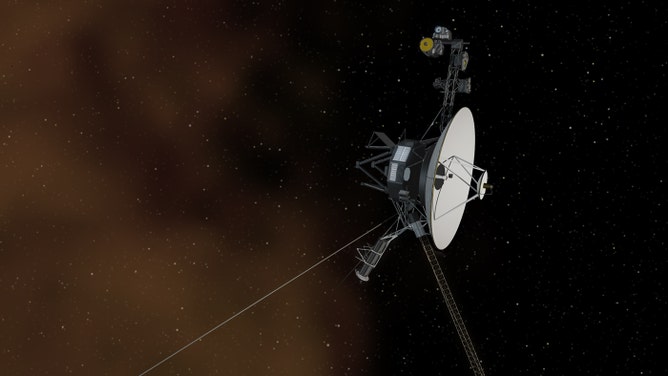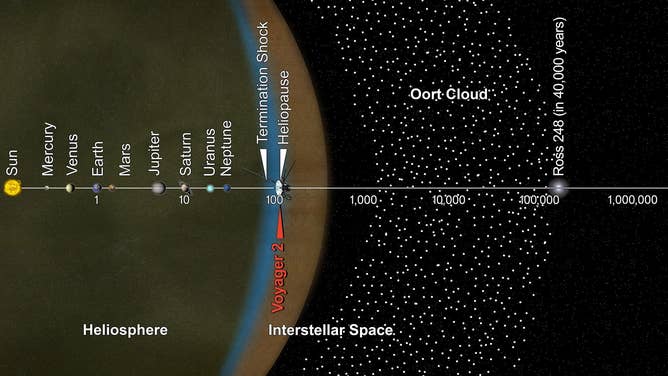NASA's Voyagers get software upgrades to prolong lives of 1970s spacecraft
NASA says both voyage spacecraft will continue to study ultraviolet light and the influences of the sun on interstellar space. New estimates say the voyagers could continue to transmit data through 2036 but will be dependent on power.
Rarely seen prelude to supernova captured by James Webb Space Telescope
The luminous, hot star Wolf-Rayet 124 (WR 124) is prominent at the center of the James Webb Space Telescope’s composite image combining near-infrared and mid-infrared wavelengths of light from Webb’s Near-Infrared Camera and Mid-Infrared Instrument.
Engineers devoted to NASA’s Voyager missions have successfully installed software upgrades that they believe could keep the two spacecraft operating for decades to come.
Voyager 1 and Voyager 2 were both launched from Cape Canaveral, Florida, in 1977 on a mission to study Jupiter, Saturn and faraway moons.
VOYAGER 1 AND 2 CONTINUE OFFERING NEW MYSTERIES FROM INTERSTELLAR SPACE
Efforts have resulted in numerous findings that still continue today, well past the expected expiration date of both voyagers.
Over the decades, NASA says propellant buildup and occasional electronic problems have caused concerns that the voyagers may be reaching the end of their lifecycles, but due to advancements on Earth, there may be new life for the missions.
The sheer size of the patch and billions of miles traveled by each spacecraft means it could take 18 hours for data to travel to the voyagers.
SEE THE OBJECTS HUMANS LEFT BEHIND ON THE MOON

Artist rendering of the Voyager 1 spacecraft
(NASA)
"Because of the spacecraft’s age and the communication lag time, there’s some risk the patch could overwrite essential code or have other unintended effects on the spacecraft," NASA stated. "To reduce those risks, the team has spent months writing, reviewing, and checking the code. As an added safety precaution, Voyager 2 will receive the patch first and serve as a testbed for its twin. Voyager 1 is farther from Earth than any other spacecraft, making its data more valuable."
Garbled data in 2022 from Voyager 1 gave engineers a scare that the spacecraft was no longer correctly transmitting data, but they were able to pinpoint the issue several months later.
"This patch is like an insurance policy that will protect us in the future and help us keep these probes going as long as possible," said Suzanne Dodd, NASA's Voyager project manager. "These are the only spacecraft to ever operate in interstellar space, so the data they’re sending back is uniquely valuable to our understanding of our local universe."
NASA REESTABLISHES CONTACT WITH VOYAGER 2 LOCATED MORE THAN 12 BILLION MILES FROM EARTH
Over the decades, scientists have gradually turned off instruments in order to prolong battery power.

Timeline of Voyager 2's travels
(NASA)
NASA engineers expect each spacecraft to continue operating at least one instrument for only the next couple of years but continue to transmit signals through 2036.
SPACECRAFT CAPTURES PHOTOS OF NEW CRATER ON MOON LIKELY CREATED BY FAILED RUSSIAN MISSION
Voyager 1 is traveling about 320 million miles a year and is on a path to leave the solar system and end up near the constellation Ophiuchus.
Voyager 2 is traveling at a rate of about 290 million miles a year and, in about 40,000 years, will be in the vicinity of the constellation Andromeda.
